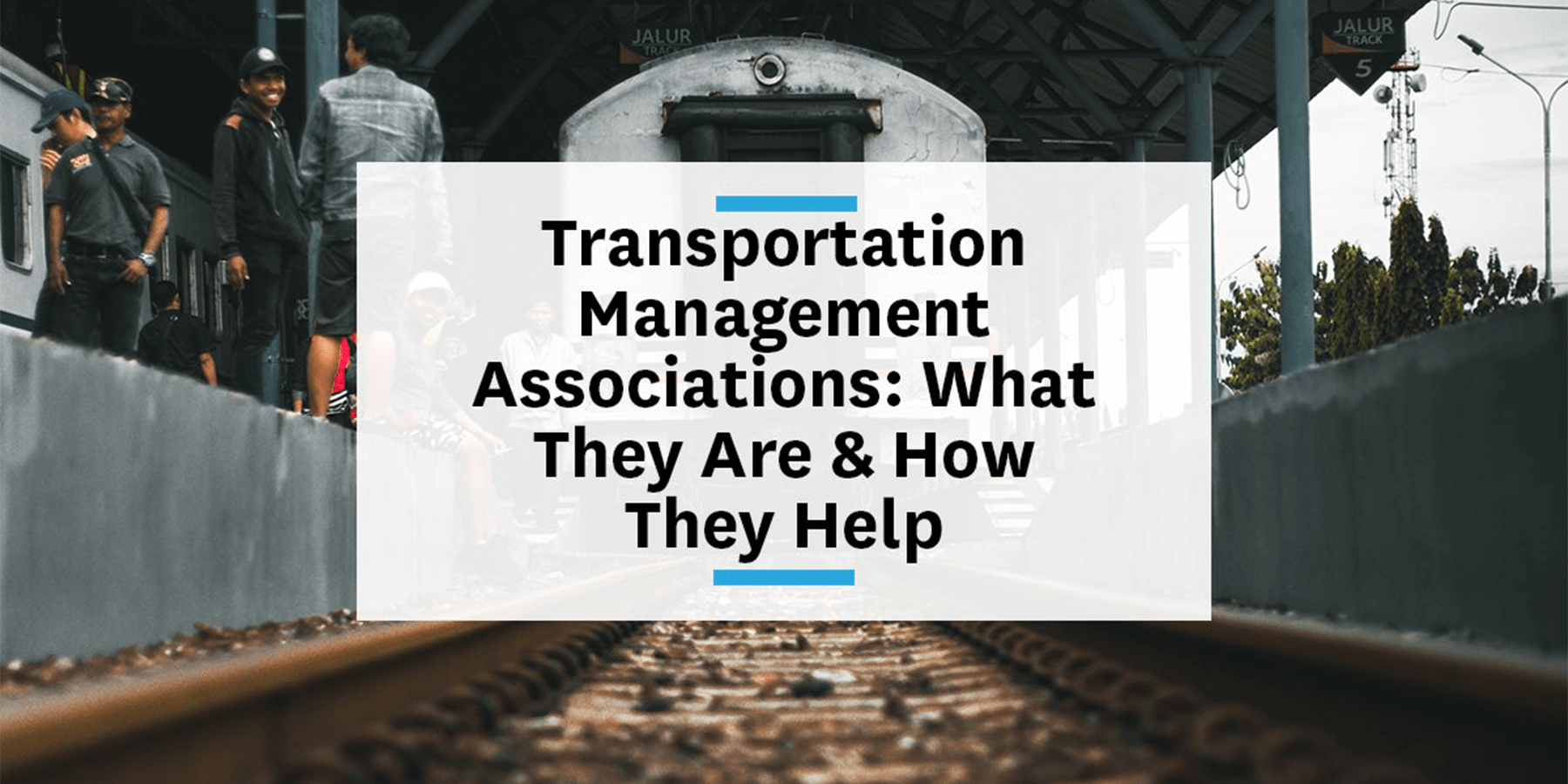Transportation Demand Management (TDM) is part of a growing initiative to reduce single-occupancy vehicle commutes. If you aren’t well-versed in city planning efforts, this can be a challenging space to get into, but it’s essential for today’s employers to understand what’s required and how they can make their workplaces more accessible to current and potential employees. That’s where transportation management associations (TMA) can be a huge help.

TMAs are key resources in improving employee commutes by providing information, organizing events, and helping employers develop TDM strategies. The Association for Commuter Transportation (ACT) is a national group working to improve transit and commuting efforts on a large scale; if you’re trying to get more involved in the space, we’d highly recommend joining. Your local TMA may be your best contact in specific locations.
Benefits of working with a TMA
TMAs are organizations that provide up-to-date information about local transit to help employers and employees make the switch to alternative, cost-effective commuting options. TMAs also help you navigate transportation and parking related laws as they may apply to your workplace or property. Additionally, TMAs work to improve new and existing infrastructure so when employees do change their commuting habits, it’s as easy as possible for them to keep them that way.
TMAs are able to show commuters the advantages of converting from cars to more sustainable options. Depending on the transit available in your location, there can be a wide range of topics. Popular events include bike-to-work challenges, panels discussing changes in the world of mobility, or even multi-day conferences.
TDM-plementation
TMAs also help employers with actually implementing their TDM efforts once they have a plan in place. These efforts can be anywhere from offering flexible work hours, finding carpool or vanpool services, or making your office more bike-friendly.
Working with these organizations and implementing these initiatives can lead to higher employee recruitment and retention rates. Even pre-pandemic, nearly 23 percent of employees said they have left a job because of a bad commute, so any extra appreciation you show your employees for making the daily trek can be the difference between them staying or leaving.
Infrastructure and policy
Reducing single-occupancy vehicle (SOV) commutes has to be a joint effort between governments, employers, and employees. Between TDM and commuter benefit-related requirements, local governments expect employers to implement company-wide policies to change how their employees commute. In order for companies to meet these requirements, however, there has to be a certain level of existing infrastructure.
This is where employers can work closely with TMAs to set progress in motion. TMAs act as a liaison between employers and government agencies to get new, useful infrastructure put in place. Additions as simple as new bike lanes or allowing new mobility options (like scooters or ridehailing services) to operate in the city can be key factors in commuting decisions.
These efforts then trickle down from employers to their employees. If local government upgrades transit infrastructure, employers must implement policies to encourage employees to take advantage of these new options — and that’s where transportation demand management efforts come into play. When employees see the effort made to accommodate their commutes, the switch from cars to transit will be easier to make. Implementing shower facilities at the office, for example, allows current bike commuters, as well as future cyclists, to freshen up before they start their day — making them five times as likely to consider biking as a commute!
A perfect example of a government and employer working together is the City of Seattle and the Seattle Children’s Hospital. As one of the city’s largest employers, Seattle Children’s Hospital was tasked with reducing its employee drive-alone rates. Between 2004 and 2015, the hospital was able to reduce their drive-alone rates from 50% to 38.5%. These numbers weren’t achieved overnight, but rather over time with significant and continuous effort.
Employers and commuters
The Association of People Supporting Employment (APSE) published a list of local TMAs broken down by state and city. If you don’t see your city on the list, you can simply Google “[insert your city name here] + TMA” and you can take it from there. Once you find the TMA(s) serving your city, depending on how they operate, you can fill out their form or reach out directly about membership. That’s all it takes!




